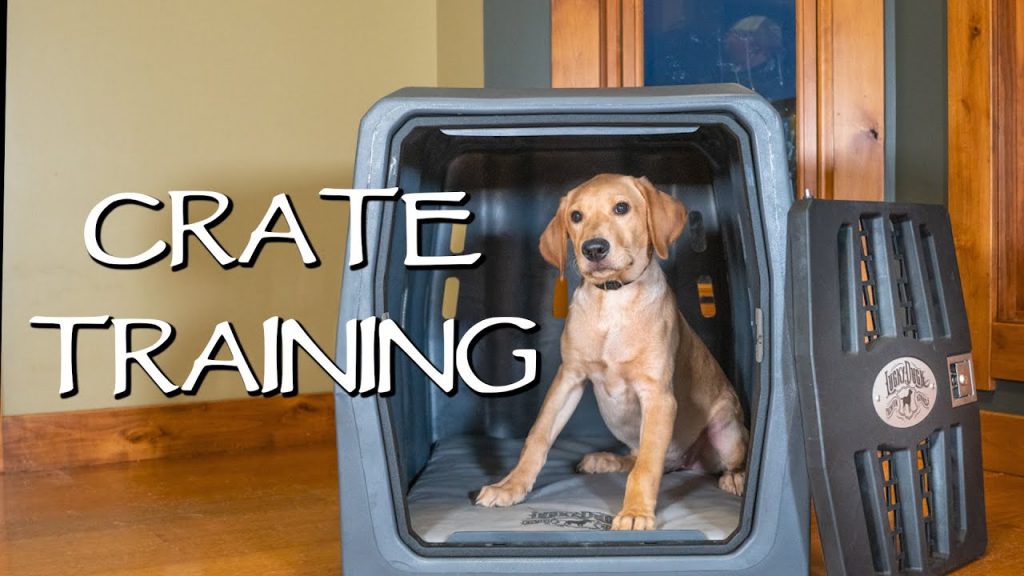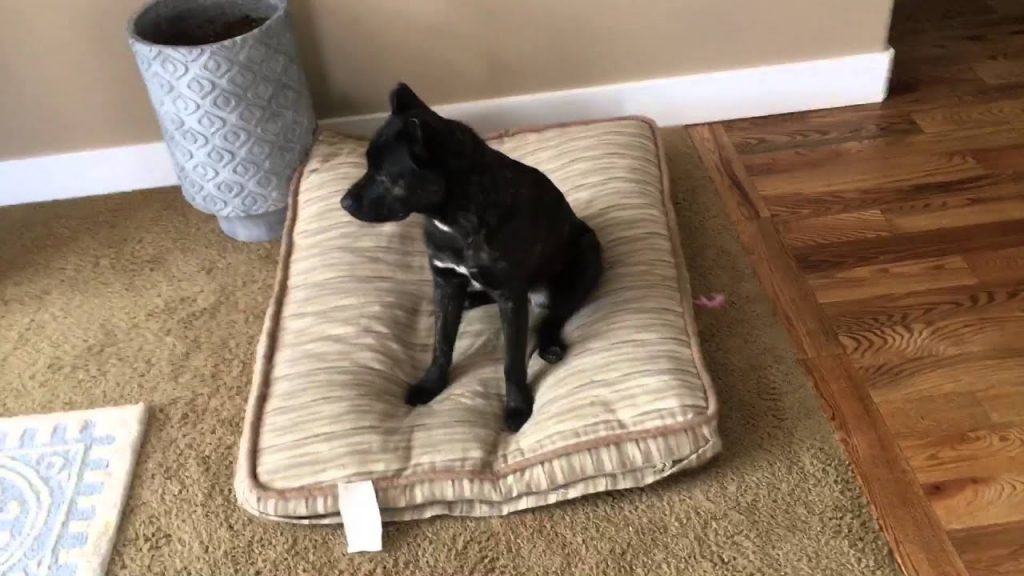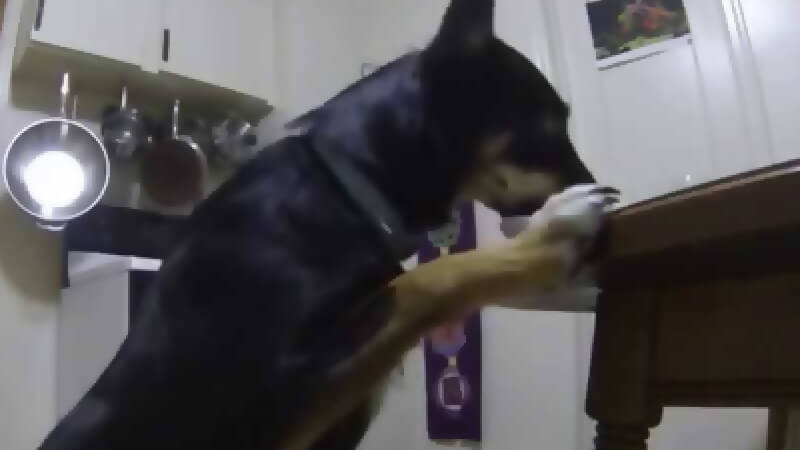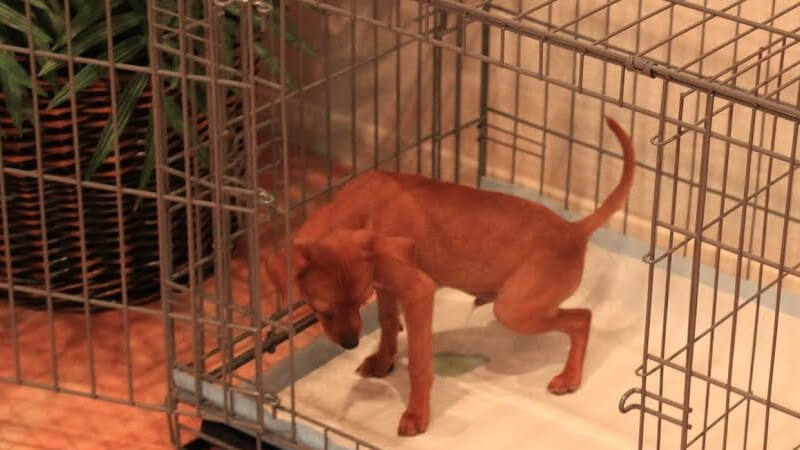Dog crate training is a popular method of housetraining. A crate represents a den for your dog. Using a crate to train your dog teaches him that the human den (the house) is to be kept clean and is a place of comfort.
Crate size should enable your dog to stand up and lie down stretched to full body length. If you purchase a wire dog crate for a puppy buy a divider panel to adjust the size as your puppy grows. If the crate is too big he may eliminate it in a corner and then go to another corner to sleep.
Dog crates are a way to prevent housetraining accidents and keep your dog safe, when you are unable to watch him, or when you leave your house without him. The crate should not be used for excessive periods of time and should not be used as punishment. By leaving the crate door open, many dogs will go into their crate to rest or hang out.
Provide lots of daily companionship, playtime, and exercise while crate training.
A crate can help reduce separation anxiety, prevent destructive behavior, and be a mobile indoor dog house moved from room to room.
A kennel crate also serves as a travel cabin for your dog when traveling by car, train, ship, or airplane. Most hotels that accept dogs require them to be crated while in the room to prevent damage to hotel furniture and carpets. If your dog is accustomed to sleeping in a crate, it will be less traumatic if he can sleep in his familiar crate. Taking your dog to the veterinarian, groomer, or on a family vacation trip with his crate will ease his anxiety.
When buying a dog crate the basic styles you will find are rigid crates that come fully and permanently set up; take-apart dog crates in sections for transport or storage; and collapsible (folding).
Introduce Your Dog to the Crate
Contents
Drop small pieces of kibble or dog biscuits in the crate throughout the day. While checking out the crate, your dog will discover delicious treats, creating a positive association with the crate. Feed him in the crate to create the same effect.
Water should be in a bowl, or if he’s still a puppy using a small hamster-type water dispenser attached to the crate.
Create a soft comfortable bed with a towel or washable blanket. Place the crate near you or in a central location when you are home to encourage your dog to go inside the crate. Leave the crate door open so your dog can go in and out by himself. I like to use a mat inside my crate with bumper pads for comfort when the dogs lay against the wire sides. The Pet Dreams Plush Cratewear Set is what I use. If your dog is prone to shedding this product comes in a canvas fabric — Pet Dreams Classic Cratewear Set.
Offer meals in front of the crate, then inside the doorway, and progress to the back of the crate.
Praise and pet your dog when he enters the crate, but don’t push, pull, or use force. At bedtime place your dog in his crate and shut the door. Ideally, the crate is placed near your bed. If this is not possible, place the crate in the kitchen, bathroom, or living room. Covering the crate at night with a lightweight small sheet can help reduce anxiety (similar to covering a bird’s cage at night).
Crate your dog for short periods while you are home. In the beginning, walk out of the room for a few minutes and then come back in — do this several times. This prevents an association with the crate and being left alone.
Very young puppies under 9 weeks old should not be crated, as they need to eliminate often (usually 8 – 12 times or more daily). Puppies under 4 months of age have very little control so don’t expect complete success immediately.
Remove your dog’s collar before confining in the crate or use a safety “break away” collar.
Make sure your dog has fully eliminated (both pee and poop) shortly before being crated. Don’t crate your dog if he has diarrhea or is vomiting. Always provide sufficient ventilation when it’s hot, and provide protection from drafts when it’s cold.
Crating Duration Guidelines
- 9-10 weeks: approximately 30 – 60 minutes
- 11-14 weeks: approximately 1 – 3 hours
- 15-16 weeks: approximately 3 – 4 hours
- 17 + weeks: approximately 4+ (6 hours maximum)
- Except for overnight, dogs should be crated for no more than 6 hours
Eliminating in the Crate Causes
- too young to have much control
- diet is not nutritious, too rich, or dog has had very large meals
- did not eliminate prior to being confined
- worms
- gaseous or loose stools
- drank large amounts of water prior to being crated
- suffers from a health condition or illness, has a urinary infection, or prostate problem
- severe separation anxiety when left alone and panic
How to Clean a Wire Dog Crate
Puppies will have accidents! If your dog relieves himself inside a wire crate, it’s easy to clean up accidents, and have the crate clean and ready for your dog to use again. Do not punish or yell at your dog for soiling in the crate.
1. Place a large stack of newspapers on the floor beside the crate. The number of newspapers should be larger than your crate, and thick enough to absorb water to prevent damage to your floors. Use several layers stacked on top of each other.
2. Put on rubber gloves to protect your hands.
3. Mix up a cleaning solution of 1 part vinegar, 1 part hot water, and 1 teaspoon dish soap. This odor cleaner and neutralizer is cheap and effective. Do not use ammonia-based products, because the odor resembles urine. Place cleaning solution into a spray bottle or a bucket.
4. Remove any dog waste from the bedding, using paper towels. If your dog has urinated in the crate, soak up what you can with the paper towels and discard them in the garbage. If your dog had a bowel movement or vomited, gather up the waste with your paper towels and discard it in the garbage.
5. Remove bedding and toys from the plastic floor pan (also known as a drip pan) at the bottom of your crate. Remove the divider panel. Bedding and toys should be washed with hot water, white vinegar, and soap in your washing machine and dried thoroughly before placing back into the crate.
6. Slide the floor pan out of the crate. Place the plastic floor pan into your bathtub. Use a scrub brush to clean the top, bottom, and sides of the plastic floor pan with the vinegar, soap, and water mixture. Also, clean the divider panel, then dry the floor pan and divider panel thoroughly. Set both aside.
7. Using your scrub brush and cleaning solution, clean all 4 sides, bottom, and the door of your crate. Dry the crate thoroughly to prevent any rust build up on the wire. If it’s a warm day, you can set the crate outside to dry.
8. Replace floor pan and divider. Replace dry bedding and toys inside the crate. Now your clean dog crate is ready for your dog to use again.
Crate and Punishment
Don’t use the crate as a form of punishment or reprimand for your dog. He will fear and resent the crate. If correctly introduced to his crate, your dog should be happy to go into his crate at any time. You can use the crate as a brief time-out as a way of discouraging nipping or rowdiness.
Children and Crates
Do not allow children to play in your dog’s crate or to handle your dog while he is in the crate. The crate is your dog’s private place. His right to privacy should be respected.
Barking, Crying & Whining in the Crate
In most cases, a dog who cries incessantly in his crate, has either been crated too long, or is suffering from separation anxiety, and is anxious about being left alone.
Dog Crate Materials and Styles
There are many different varieties of dog crates to choose from. Styles vary from basic and functional to elaborate designer posh dog crates.
- Wire dog crates are durable and last for many years. They have good visibility, ventilation, and are easy to clean. Drop pin wire dog crates are designed for permanent set up and come in sections that are fastened together with pins. Collapsible wire dog crates fold up and can be carried suitcase style with a handle. Wire crates are not approved for airline travel. MidWest is the brand wire crate I use for my dogs
- Plastic dog crates have ventilation holes on the sides and a steel mesh door. They are available in a range of colors, are lightweight and strong, offer shelter from cold, wet environments. They usually meet regulations for airline travel.
- Molded fiberglass crates are similar to plastic — lightweight and strong, often meeting airline regulations. Plastic and fiberglass crates are often called flight kennels.
- Wood frame dog crates come with a steel bar or mesh insulation panels. Wood is used for both sturdy airline-style shipping crates, as well as for attractive furniture-style crates.
- Wicker (or rattan) dog crates are either made entirely of wicker or consist of wicker pieces interwoven through slats of a wire cage. They are decorative and meant for indoor use and not intended for travel.
- Soft dog crates are made of nylon, nylon-mesh, or canvas with aluminum or composite tubing for soft-sided or tent-style crates. Some soft dog crates are rectangular in shape like a traditional wire dog crate, while others are dome-shaped similar to a cabana or tent.
- Aluminum crates often used at dog shows, come in foldable or fixed styles with ventilation panels. They are made from aircraft-grade aluminum, are lightweight, strong, and rust-proof.
- Designer dog crates create a posh environment for your dog. Inside the crates, walls are covered in silk, velvet, faux fur, or bed fabrics and are luxurious. Designer dog crates are not recommended for puppies while teething or chewing (up to 6 months of age), or for dogs with chronic chewing problems.





